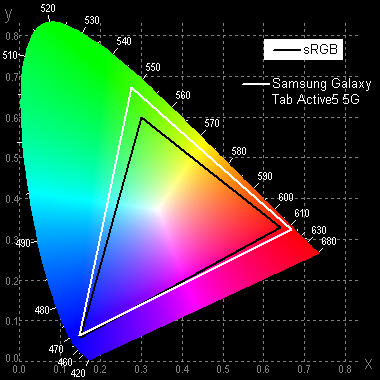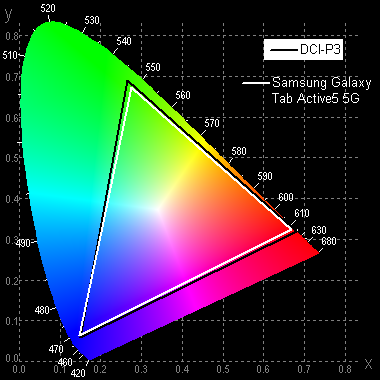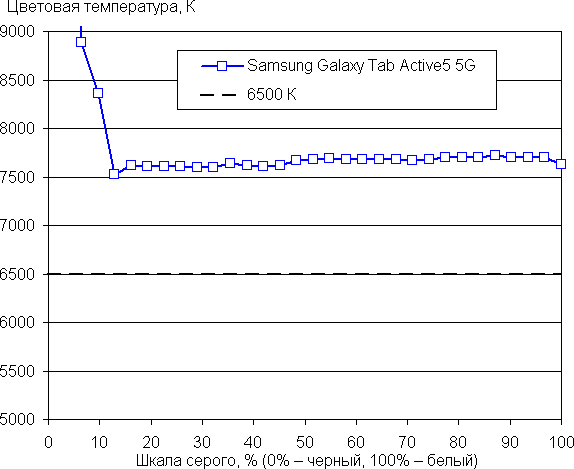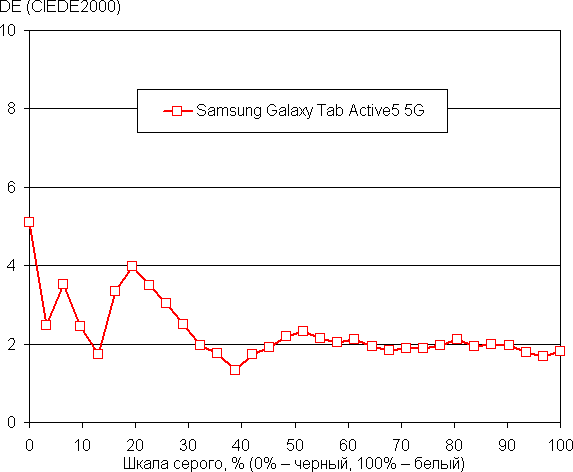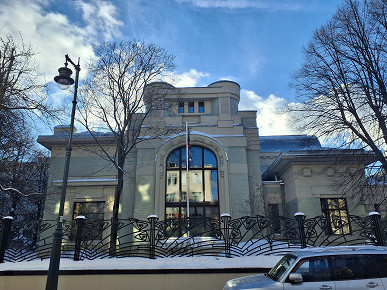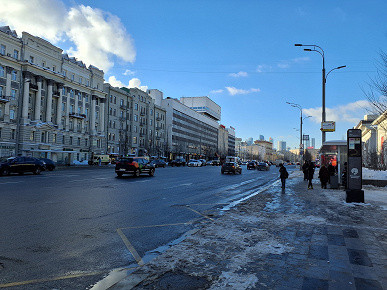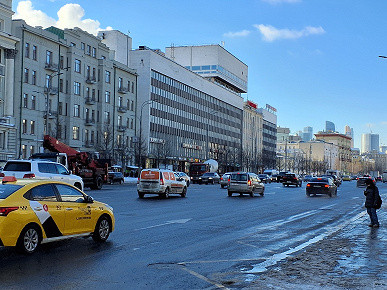In recent years, the compact tablet segment has faced a slowdown, if not a crisis. This is due to the fact that smartphones with a screen diagonal of about 6.5 inches are no longer surprising, and the question arises: why buy a tablet with a screen of about 8 inches if a smartphone is still indispensable? However, the need for a tablet may be determined by the specifics of its use. For example, for professional tasks while working on site, a compact tablet may be more convenient, especially if it is provided with reliable protection and all the necessary functionality. Samsung Galaxy Tab Active5 5G is an example of such a device.
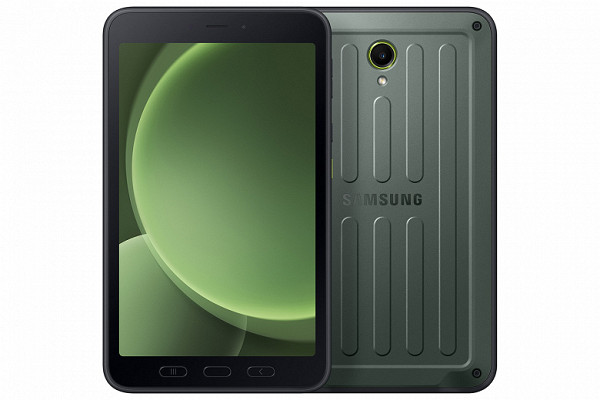
This model is available in two configurations: with 6/8 GB of RAM and 128/256 GB of storage. The first version is offered in Russia, but we received the most advanced version for testing. This should be taken into account when evaluating device performance.
Specifications
- SoC Samsung Exynos 1380 (4x Cortex-A78 @2.4 GHz + 4x Cortex-A55 @2.0 GHz)
- RAM 6/8 GB
- Flash memory 128/256 GB
- Memory card support: microSD up to 1 TB
- Operating system Android 14
- Touch display IPS, 8.0″, 1920×1200 (283 ppi), capacitive, multi-touch
- Cameras: front (5 MP) and rear (13 MP, 4K 30 fps video)
- Wi-Fi 6 (802.11b/g/n/ac/ax, 2.4 and 5 GHz), Wi-Fi Direct
- Mobile Internet: 3G, 4G (LTE), 5G
- GPS, Glonass, Galileo, BeiDou, QZSS
- Fingerprint scanner, facial recognition
- S-Pen support
- Connectors: USB-C, 3.5 mm minijack
- Pogo Pin connector (for charging in a special docking station)
- Lithium polymer battery 5050 mAh
- Protection: IP68, MIL-STD-810H
- Dimensions 127×214×10.1 mm
- Weight 433 g
The main and most obvious competitor to the Samsung Galaxy Tab Active5 5G is the Apple iPad mini. However, the company from Cupertino has not updated this line of models for more than two years. However, the 2021 iPad mini remains significantly more expensive both in Russian retail and in foreign online stores, when comparing similar configurations. Although it would be more correct to compare the Samsung Galaxy Tab Active5 5G with other rugged tablets of the same form factor, since such devices have not been tested for a long time, in this article we will limit ourselves to only a comparison with the most famous competitor.
| Samsung Galaxy Tab Active5 5G | Apple iPad mini (2021) | |
|---|---|---|
| Screen | IPS, 8.0″, 1920×1200 (283 ppi) | IPS, 8.3″, 2266×1488 (326 ppi) |
| SoC (processor) | Samsung Exynos 1380 (8 cores, 4+4, maximum frequency 2.4 GHz) | Apple A15 Bionic (6 cores, 2+4, maximum frequency 2.93 GHz) |
| RAM | 6/8 GB | 4 GB |
| Flash memory | 128/256 GB | 64/256 GB |
| Memory card support | microSD up to 1 TB | No |
| Connectors | USB-C, 3.5 mm minijack | USB-C |
| Cameras | front (5 MP) and rear (13 MP, video 4K 30 fps) | front (12 MP) and rear (12 MP, video 4K 60 fps) |
| Internet | Wi-Fi 6 (Wi-Fi 802.11a/b/g/n/ac/ax), 3G/4G/5G | Wi-Fi 6 (Wi-Fi 802.11a/b/g/n/ac/ax), optional 3G/4G/5G |
| Safety | fingerprint scanner, facial recognition | Fingerprint's scanner |
| Battery (mAh) | 5050 | 5078 |
| Keyboard cover support | No | No |
| Stylus support | yes (S-Pen) | yes (Apple Pencil 2nd generation) |
| Weight | 433 | 297 |
It is obvious that the Samsung Galaxy Tab Active5 5G is superior to its competitor in almost all respects, with the possible exception of the weight of the device, which is significantly higher. However, the weight is largely determined by the design of the model, which we will discuss next.
Packaging and accessories
The test copy arrived to us without packaging, but in a branded protective case and with an S-Pen stylus, for which there is a special hole in this case.
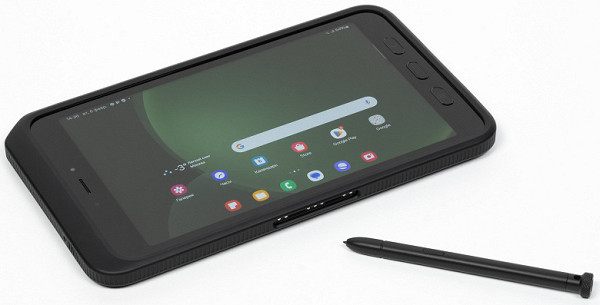
The case is made of dense rubberized material, providing protection not only to the back surface of the device, but also to all its sides. This helps prevent damage to the tablet even if it falls slightly.
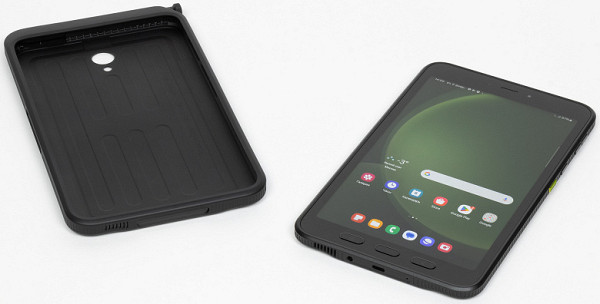
Only the screen remains relatively vulnerable, but thanks to the slightly raised sides of the case above the level of the glass, when it falls face down, the impact is primarily absorbed by them. In addition, the glass itself is protected — it is Corning Gorilla Glass GG5.
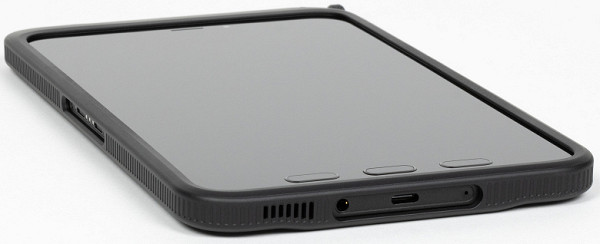
Of course, the case cannot guarantee complete safety of the tablet under serious impacts. However, it significantly increases the likelihood of its preservation in normal living conditions. The price for this is a significant increase in size: on the wide side the case adds more than 1.5 cm, but this is due to the presence of a niche for the stylus.
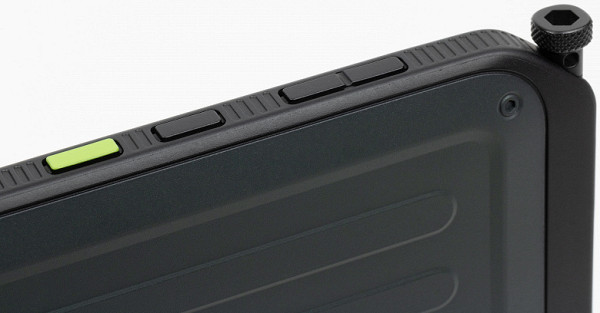
The stylus itself has a standard design and functionality. The upper part of the stylus is a finely ribbed “puck”, which is significantly wider than the main part. This design may not be very elegant, but it makes it easy to remove the stylus from the case. Under this “washer” there is a hole through which you can pass the lace onto your hand.
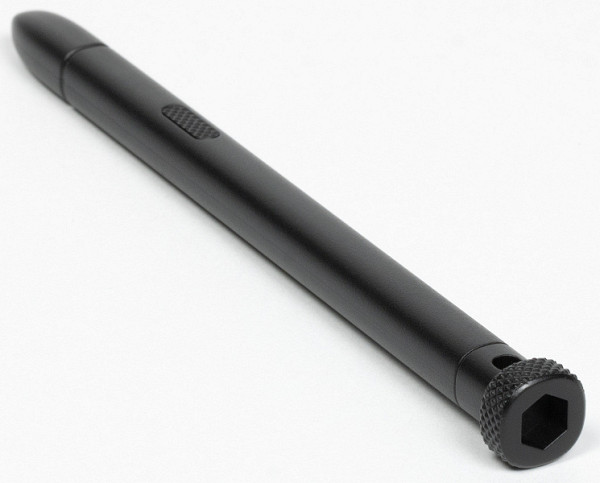
As for the appearance of the case, it almost perfectly imitates the tablet itself — right down to the screws that seem to secure the back cover (although in fact they are also an imitation). This is a good solution, since there is no desire to “undress” the device in order to maintain its style.

Design
Now let's take a look at the design of the tablet itself. It is certainly far from modern standards, which imply lightness, grace, minimalism and, if possible, a metallic finish with minimal bezels around the screen. In this case, everything is done exactly the opposite.
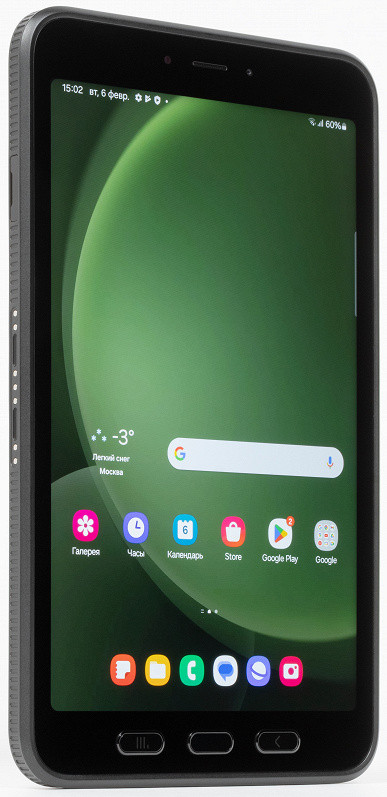
The body is made of almost black plastic, with a slight greenish tint, which makes it look more interesting and brutal. The shape of the device also reinforces this impression. The manufacturer clearly did not strive for a minimum thickness, which made it possible to add design elements that give the device additional millimeters.

The back cover is removable, allowing access to the battery — a rare occurrence these days. However, for professional use it can be very valuable. Firstly, this makes it possible to purchase additional replaceable batteries and hot-swap them when powered from the mains (the “battery-free” mode is supported). And secondly, if the device freezes, you can easily restart the tablet by removing and reinserting the battery.
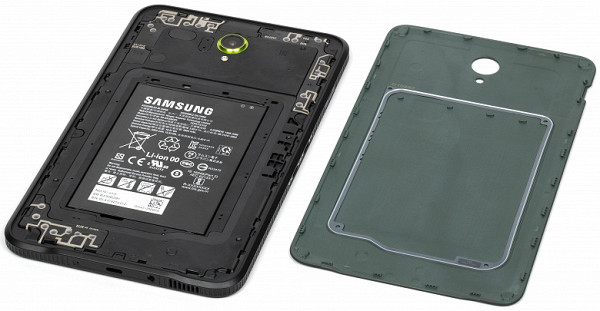
Another noticeable difference is the number of buttons: there are seven in total. Four are located on the top edge (when the device is in a horizontal position) and are designed to adjust the volume, turn the power on/off, and launch the camera. The last button, highlighted in bright yellow, is software and can be configured to launch any other application.
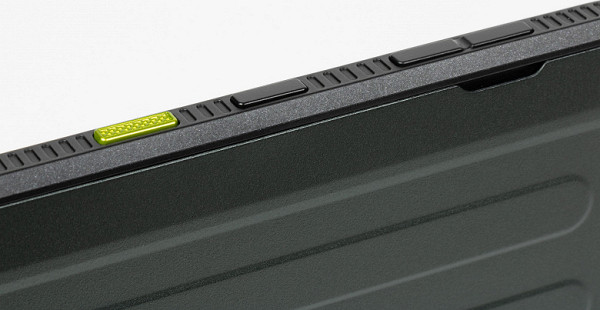
The other three buttons are not on the side surface, but under the screen (in the vertical orientation of the tablet). These are standard Android navigation buttons (list of running applications, home screen, back), which are gradually becoming a thing of the past due to on-screen gestures. However, they remain useful for working with gloves, when taking out the stylus to perform actions may be inconvenient. The buttons are tactilely identical, and muscle memory quickly gets used to using them, so experienced Android users shouldn't have any problems.
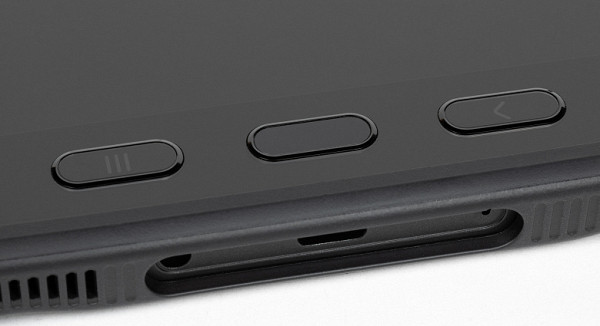
The frame around the screen is quite wide: even at the narrowest point (on the long side) it is 6 mm of glass plus 3 mm of the edge. However, the size of the device’s body still allows it to be held comfortably with one hand.
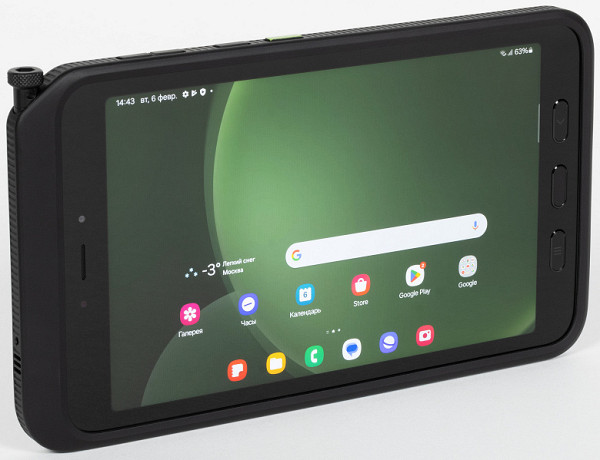
When it comes to connectors, we should note the presence of a 3.5 mm jack for wired headphones. Recently there has been a tendency to abandon the minijack, but in this case we see a conservative approach that will find its fans. After all, finding wired headphones faster is much easier than connecting to a Bluetooth headset, which may run into compatibility issues.

This is especially noticeable considering that the tablet only has one speaker. Moreover, it is not even located in the center of the edge (in the photo above its hole is on the right, next to the minijack). Sound quality is average, as expected. The tablet is clearly not positioned as a multimedia device.
But the presence of a USB-C port shows that this is a modern solution, and not a rarity from the 2010s. Add to this a combined slot for a microSD memory card and a SIM card, and we get maximum functionality for a device of this class.
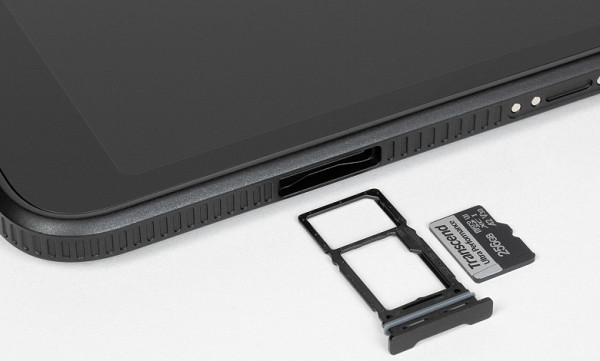
Overall, this tablet is not designed for entertainment, style, or comfort use. This is a working tool that is purchased for specific tasks, be it tracking goods in a warehouse, navigating on a hike, or replacing a portable sketchbook.
Screen
Samsung Galaxy Tab Active5 5G is equipped with an 8-inch diagonal screen with a resolution of 1920x1200 pixels. This provides a fairly good, although not the highest, pixel density of 283 ppi.
The screen surface is made of glass with a mirror-smooth surface that is scratch-resistant. The screen's anti-glare properties are better than some similar models, making it easy to use in bright light. An oleophobic coating on the outer surface of the screen makes it easier to remove fingerprints.
The maximum screen brightness reaches 630 cd/m² with manual control and 840 cd/m² with automatic brightness control. This allows you to comfortably use the device even in bright sunlight. The minimum brightness is 7 cd/m², which is suitable for use in dark environments.
The tablet is equipped with an IPS matrix, which provides a good level of image quality. The automatic brightness adjustment function allows you to adapt the screen brightness to changing lighting conditions.
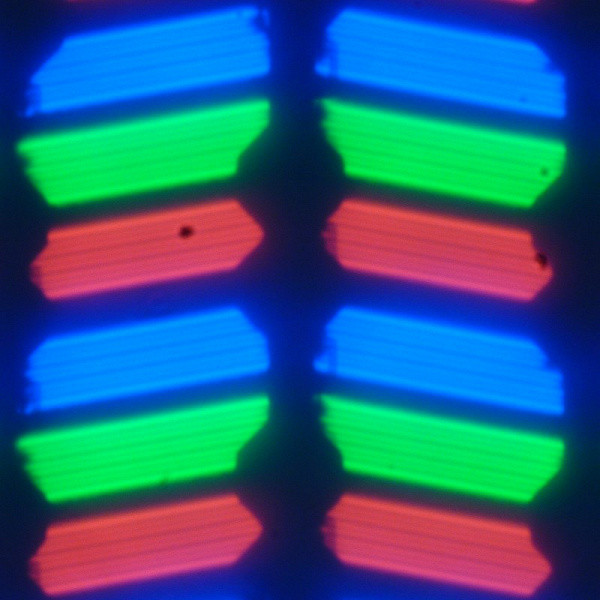
The photos show two screens: the tested tablet (below) and the Nexus 7 tablet (above). Both screens display the same images, and the brightness of the screens is initially set to approximately 200 cd/m², and the color balance on the camera is set to 6500 K.
The image shows a white field perpendicular to the screens.
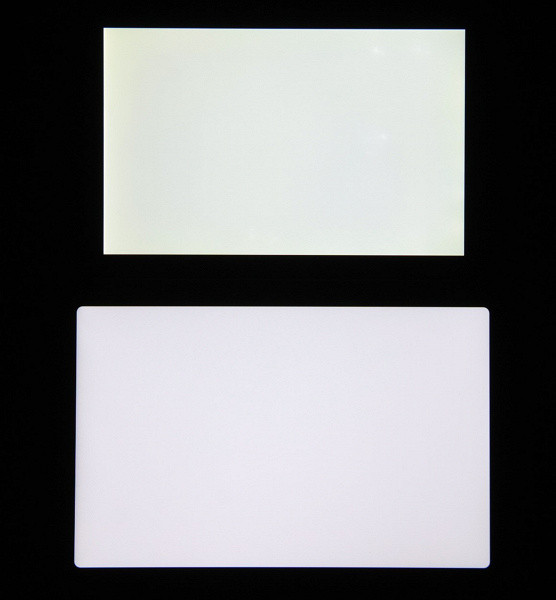
Note the good uniformity of brightness and color tone of the white field.
And a test picture:
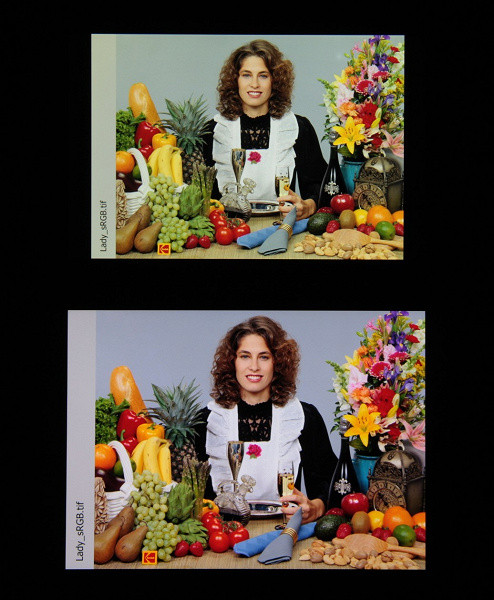
The colors on the test tablet's screen look oversaturated and the color balance differs from the other screen. It is important to note that photographs cannot accurately convey color quality and are used for illustrative purposes only. The screen of the tested tablet has good viewing angles, without distorting colors when the view deviates from the perpendicular. However, the black field becomes lighter when tilted diagonally, but remains a relatively neutral gray color. The uniformity of the black field when viewed perpendicularly is average.
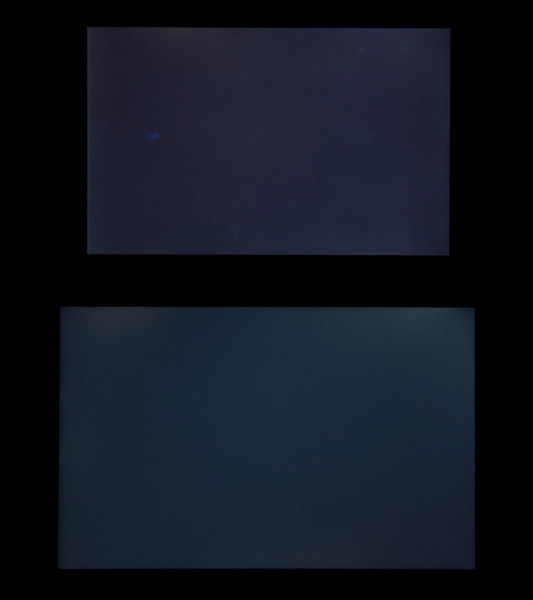
The contrast on the screen, especially around the center, is quite high and is about 1300:1. The response time from black to white and back is 18 ms (9 ms on and 9 ms off). The transition between 25% and 75% gray halftones and back takes a total of 30 ms.
A gamma curve constructed using 32 points at equal intervals based on the numerical value of the gray shade did not show any deviations in highlights or shadows. The exponent of the approximating power function is 2.27, which is slightly higher than the standard value of 2.2. The real gamma curve practically does not deviate from the power-law dependence.
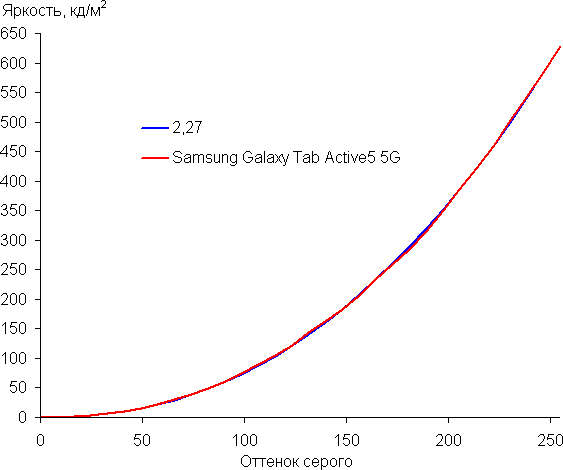
The tablet provides dynamic adjustment of the backlight brightness depending on the nature of the displayed image. However, a significant decrease in backlight brightness is only observed in very dark images, which overall has a negligible impact on image quality.
The screen color gamut is wider than standard sRGB and close to DCI space.
Let's look at the spectra:
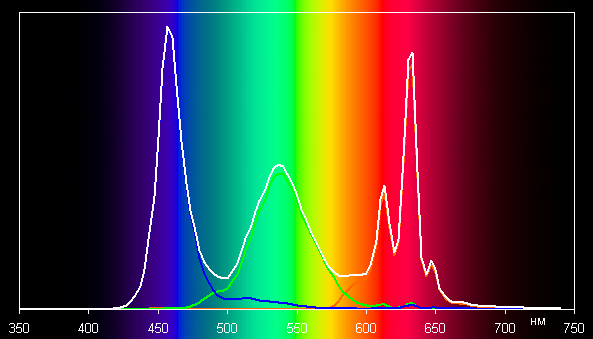
The spectra of the components are clearly distinguishable, which results in a wide color gamut. However, on a consumer device this can be a disadvantage, as colors in standard sRGB images (which make up the bulk of the content) can appear unnaturally saturated. This is especially noticeable on recognizable shades, such as skin tones.
Gray balance is average as the color temperature is well above the standard 6500K. However, the blackbody deviation (ΔE) remains below 10, which is considered acceptable for consumer devices. In addition, color temperature and ΔE vary little from hue to hue, which has a beneficial effect on the visual assessment of color balance.
There is a setting that allows you to reduce the intensity of the blue component.
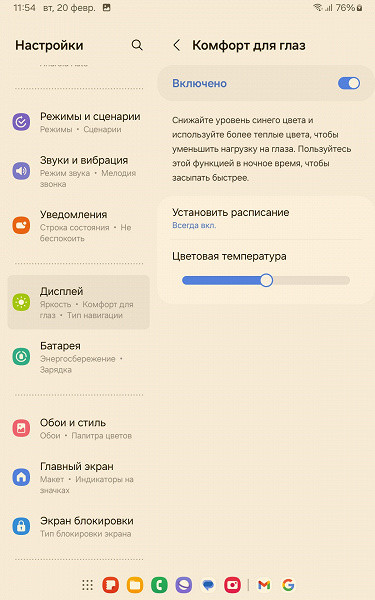
In general, bright light can disrupt the circadian rhythm, but this can easily be corrected by reducing the brightness to a comfortable level without distorting the color balance by reducing the contribution of blue light. Although screen adjustments can be used to correct color balance, lowering the color temperature in the white field has a greater effect on the grayscale, resulting in a visible hue imbalance. Therefore, it makes no sense to carry out such a correction.
In the screen settings, you can activate a mode with an increased refresh rate of up to 120 Hz.
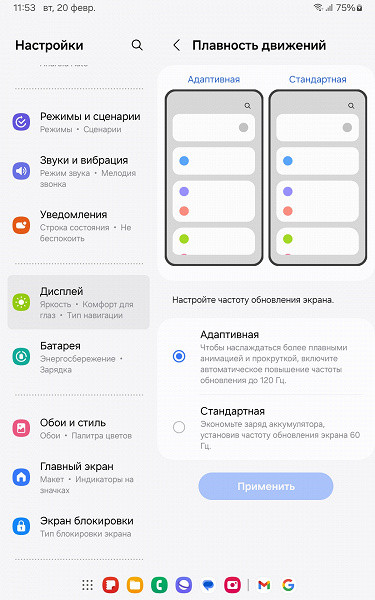
In 120 Hz mode, the smoothness of scrolling through the settings menu and other elements is noticeably improved.
This device most likely does not support DisplayPort Alt Mode for USB Type-C, which means it will not be able to output image and sound to an external device when connected to a USB port.
To summarize: the screen has a very high maximum brightness (840 cd/m²) and excellent anti-glare properties, which allows you to use the device even on a sunny street. In complete darkness, the brightness can be reduced to a comfortable level (up to 7 cd/m²). The automatic brightness adjustment mode works adequately. Among the advantages of the screen are the presence of an effective oleophobic coating, the absence of an air gap in the layers of the screen, the absence of visible flicker, high contrast (1300:1), and a mode with a high refresh rate (120 Hz). Disadvantages include poor black stability when looking away and oversaturation of colors. In general, given the importance of these characteristics for this class of devices, the quality of the screen can be considered quite high.
Operating system and software
The tablet runs on Android 14 with One UI 6.0 shell. It also uses Samsung Knox 3.10 security platform.
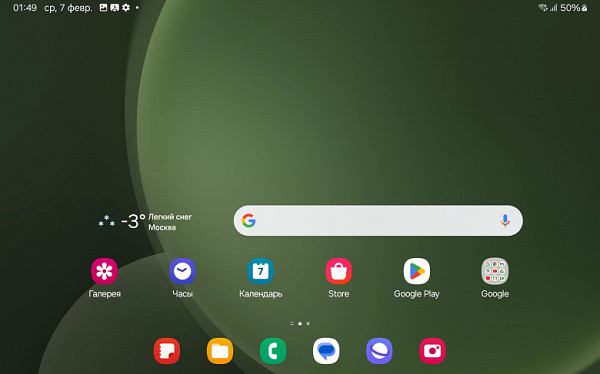
Let's list some features of the tablet interface. Firstly, on the home screen there is a panel with the most important applications, which can be easily changed at your discretion. Secondly, even when you launch an application, the panel remains on the screen, but is reduced in size, and frequently used applications are added to the already significant icons. For example, after launching the Google Play Store, this block with important applications is still present at the bottom of the screen.
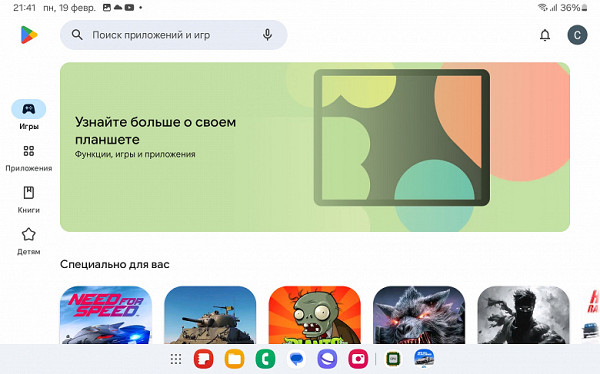
Next, when the tablet is in landscape orientation, another panel extends from the right edge of the screen. By default, icons of various applications are located here, which can be replaced with others or widgets added. It is possible to create several such panels, between which you can switch by swiping.
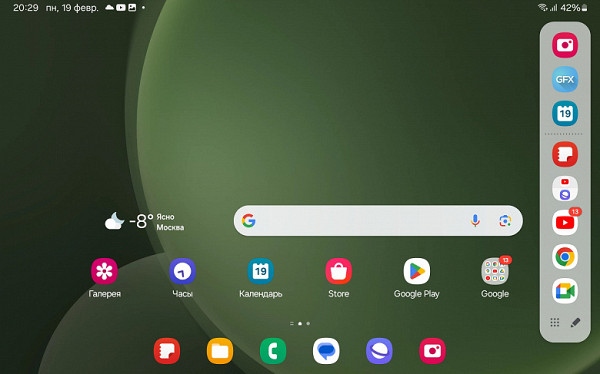
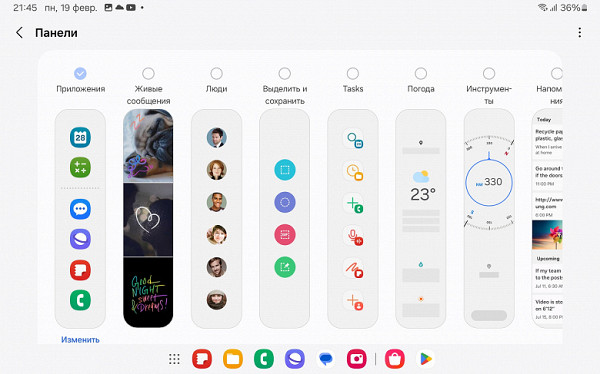
It is also worth noting the presence of two application stores — Google Play Store and Samsung Store, as well as a full set of Google services and a number of Samsung proprietary utilities. These include a collection of coloring pages for the Penup stylus, an app for creating your own avatar in AR Zone, and an app for connecting your tablet to your PC.
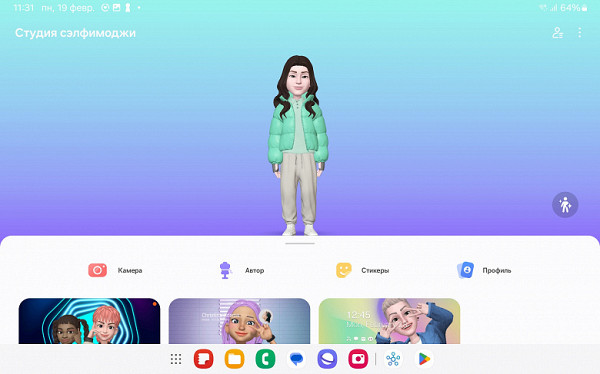
During use, we encountered some software problems. For example, when trying to install the Burnout Benchmark app from the Google Play Store, the installation process continued endlessly and did not complete despite repeated attempts and restarting the device. Also, when using the GFX Benchmark application, after performing a battery test, the application crashed and refused to start (only a complete reinstallation of the application helped). These cases may be isolated, but they raise concerns about possible problems with other applications.
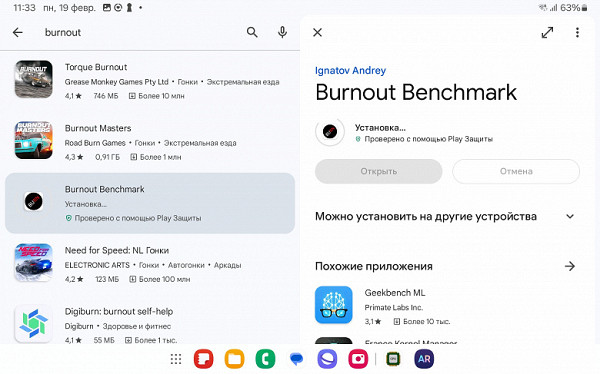
Connection
The tablet is equipped with a cellular module, which, although it supports 5G technology, does not yet have practical value in Russia. However, 4G works flawlessly. The device can also be used as a regular phone.
Another advantage is support for Wi-Fi 6 and satellite navigation.
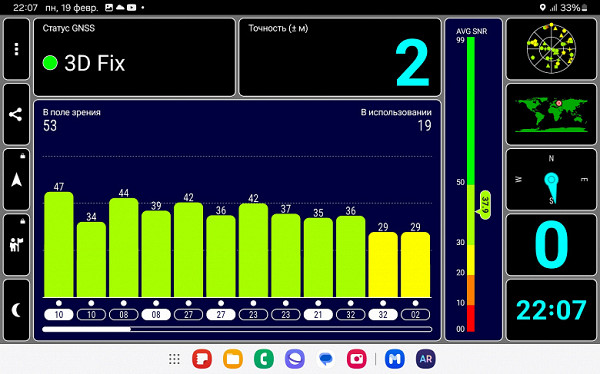
During a cold start, the tablet finds the first GPS satellites within 15 seconds, and Glonass satellites appear after about a minute and a half. More than 50 GPS satellites are visible in open areas.
Performance
The tablet runs on the Samsung Exynos 1380 SoC, which includes four high-performance Cortex-A78 cores clocked at 2.4 GHz and four energy-efficient Cortex-A55 cores clocked at 2.0 GHz. The tested version of the tablet has 8 GB of RAM.
Let's compare the tablet's performance with the iPad mini, starting with browser tests: JetStream 2, Octane Benchmark 2.0 and Kraken Benchmark 1.1. On the Samsung tablet, tests were performed in the Chrome browser, which is standard for all Android tablets, and on the iPad mini, in Safari.
| Samsung Galaxy Tab Active5 5G (Samsung Exynos 1380) | Apple iPad mini 2021 (Apple A15 Bionic) | |
|---|---|---|
| JetStream 2 (bigger is better) | 100 points | 137 points |
| Octane 2.0 (bigger is better) | 32060 points | 56215 points |
| Kraken Benchmark 1.1 (less is more) | 1173 ms | 455 ms |
The test results show that the Galaxy Tab Active5 5G is inferior to the iPad mini, although not significantly.
Next, we'll take a look at its performance on Geekbench, a multi-platform benchmark that evaluates CPU and RAM performance. In addition, we also take into account the results of the comprehensive AnTuTu Benchmark test.
| Samsung Galaxy Tab Active5 5G (Samsung Exynos 1380) | Apple iPad mini 2021 (Apple A15 Bionic) | |
|---|---|---|
| Geekbench 6 Single-Core Score (higher is better) | 974 | 2153 |
| Geekbench 6 Multi-Core Score (higher is better) | 2880 | 5655 |
| AnTuTu Benchmark 10 points (more is better) | 593088 | 1238402 |
Here the gap is already approximately twofold.
Now let's look at the situation with 3D benchmarks that simulate video games.
| Samsung Galaxy Tab Active5 5G (Samsung Exynos 1380) | Apple iPad mini 2021 (Apple A15 Bionic) | |
|---|---|---|
| 3DMark SlingShot Extreme (points) | 4787 | Maxed out! |
| 3DMark WildLife (points) | 2989 | 9334 |
If the difference in processor benchmarks was approximately double, then here it may be even greater. This is observed in both 3DMark and GFX Benchmark. However, it's worth noting that at the time of our testing, GFX Benchmark did not work correctly on the iPad mini, so we don't have results for that device. However, we have results for the iPhone 13, which uses the same SoC and has the same amount of RAM.
| Samsung Galaxy Tab Active5 5G (Samsung Exynos 1380) | Apple iPhone 13 (Apple A15, 4 GB RAM) | |
|---|---|---|
| GFXBenchmark 1440р Aztec Ruins (High Tier Offscreen) | 13 fps | 31 fps |
| GFXBenchmark 1080p Aztec Ruins (Normal Tier Offscreen) | 34 fps | 89 fps |
| GFXBenchmark 1080p Car Chase Offscreen | 31 fps | 63 fps |
| GFXBenchmark 1440p Manhattan 3.1.1 Offscreen | 30 fps | 61 fps |
| GFXBenchmark 1080p Manhattan 3.1 Offscreen | 53 fps | 127 fps |
| GFXBenchmark 1080p Manhattan Offscreen | 79 fps | 140 fps |
So, the Samsung Galaxy Tab Active5 is still not a gaming device, although it is quite suitable for games, including 3D games like Real Racing 3. In everyday use, especially professional use, you are unlikely to encounter any performance issues.
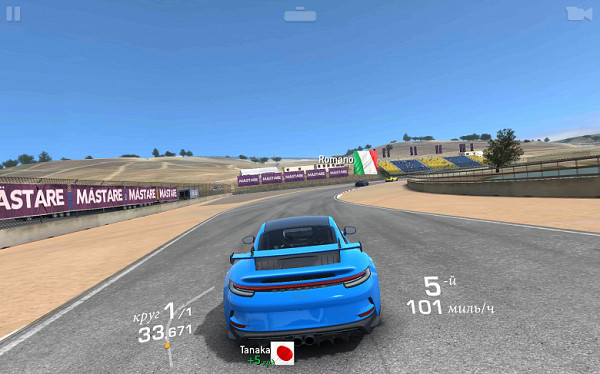
Autonomous operation and heating
But what turned out to be the absolute strength of the device was its battery life. Compared to the same iPad mini, the results of the Samsung tablet are significantly better.
| Samsung Galaxy Tab Active5 5G (Samsung Exynos 1380) | Apple iPad mini 2021 (Apple A15 Bionic) | |
|---|---|---|
| Watching online videos from YouTube (1080p, brightness 100 cd/m²) | around 18 o'clock | about 13 o'clock |
| Reading mode (brightness 100 cd/m²) | about 22 o'clock | 12 hours 35 minutes |
There is no need to talk about serious heating during use — in this regard, Samsung is also much more advantageous than the thin metal iPad mini.
Camera
The Samsung Galaxy Tab only has one rear camera. The resolution is 13 megapixels, and it is capable of recording 4K video at 30 frames per second, which is standard. There is also a flash. Let's now look at the pictures themselves.
When shooting, you may notice a 2x zoom button, but it should be noted that this is a digital zoom (as you can see from the photos above, taken from approximately the same point). Despite this, thanks to software algorithms, the image, even when enlarged, looks acceptable enough to be displayed on a tablet screen.
The detail in the images is relatively modest, but the image is clean, without noise or artifacts, especially in daylight — with correct color rendition. However, when shooting in the evening, certain problems become noticeable. To compensate for the lack of light, the tablet automatically increases the shutter speed, which can blur moving objects. For example, taking a clear photo of the road in the evening can be difficult because moving cars may be blurred.
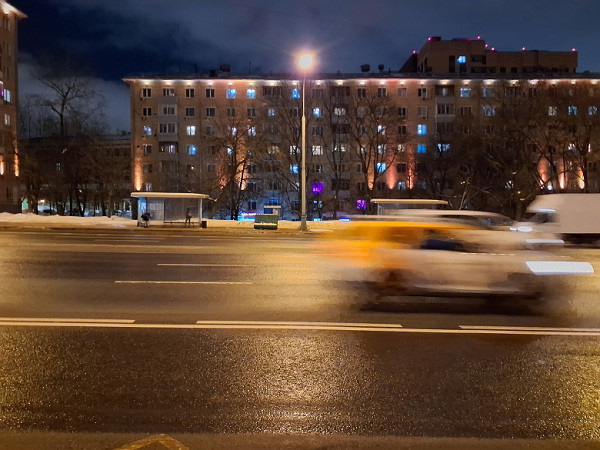
conclusions
Based on the test results, it becomes clear that the Samsung Galaxy Tab Active5 5G is designed for specific use cases, for which its characteristics have been adapted. Potential owners of such a tablet are people who work outside the office or in enterprises such as warehouses. First of all, the device provides decent battery life (with the ability to replace the battery), a very bright screen, reliable case protection (especially with the use of a branded case), a full set of modern communication and navigation modules, as well as many physical buttons and the classic connector 3 .5 mm for headphones.
The manufacturer has focused on functionality, but has cut costs on aspects such as sound quality (only one speaker is used), gaming performance (since the device is not entertainment-oriented) and photo and video capabilities. The design of the tablet also does not follow fashion trends and does not pursue the goal of reducing the thickness of the case or the frames around the screen. Samsung Galaxy Tab Active5 5G is a device in which external indicators are not important, but the ability to effectively perform work tasks.

